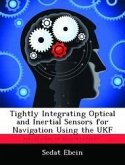Navigation in indoor and urban environments by small unmanned systems is a topic of interest for the Air Force. The Advanced Navigation Technology Center at the Air Force Institute of Technology is continually looking for novel approaches to navigation in GPS deprived environments. Inertial sensors have been coupled with image aided concepts, such as feature tracking, with good results. However, feature density in areas with large, flat, smooth surfaces tends to be low. Polarimetric sensors have been used for surface reconstruction, surface characterization and outdoor navigation. This thesis combines aspects of some of these algorithms along with a realistic, micro-facet polarimetric model and a Kalman filter approach to determine surface structure and platform orientation in an indoor environment. A series of graphical user interfaces were developed to estimate surface material parameters. A more complex simulation software package was used to estimate camera attitude. A physical polarimeter was also designed and built to test the algorithms in a realistic environment. An improvement in attitude estimation of up to 50% was demonstrated.
Bitte wählen Sie Ihr Anliegen aus.
Rechnungen
Retourenschein anfordern
Bestellstatus
Storno









